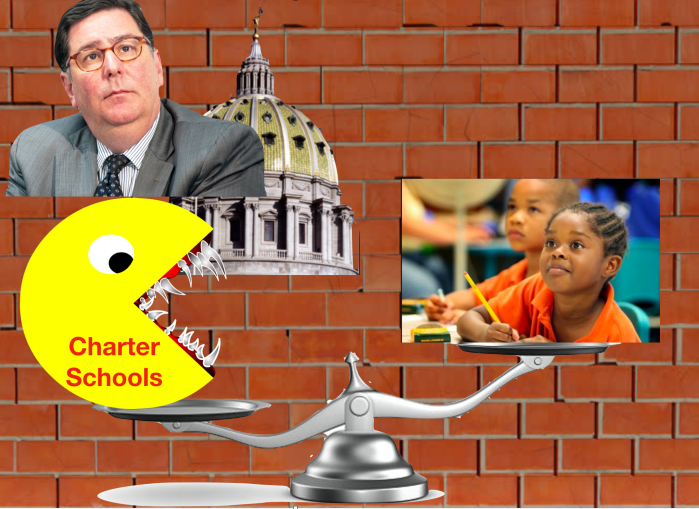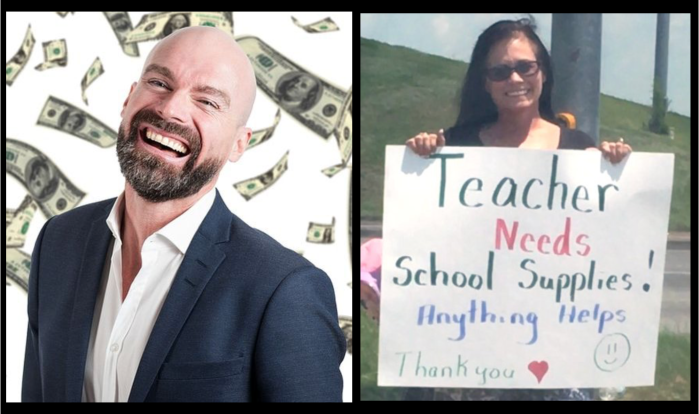
America is one dumbass country.
We don’t do the metric system.
We don’t do universal healthcare.
And during a global pandemic, we don’t demand the government pay us to stay home and stop the spread of the disease.
Instead, we demand the government let us go out and get sick.
It should come as no surprise, then, that we deeply under-fund our public schools.
There’s always money for a new war or to subsidize fossil fuels or give billionaires another tax cut, but when it comes to teaching kids how to think critically about their world – time to take out the scissors and slash some budgets.
And now with the inevitable loss of taxes after shutting down the economy to save lives during the global Coronavirus outbreak, experts are expecting the deepest budget cuts to schools – well, ever.
Sixty two district superintendents from urban districts wrote to Congress in April warning of a 15-25% loss in revenues next fiscal year.
The school leaders from cities like New York City, Los Angeles, Chicago and Miami, say that a 20% loss in both state and local taxes, alone, would result in laying off about 275,000 teachers.
And this would come after students had already suffered significant academic losses during the current (2019-20) school year because of school closings and distance learning initiatives that could not possibly meet the needs of students as well as in-person learning.

They ask legislators to enact a plan devised by the Albert Shanker Institute – a policy organization aligned with the American Federation for Teachers (AFT) – in which the federal government would give billions of dollars to districts in several phases to keep schools open. Then states would increase funding to levels before the Great Recession (2009-13), build up budget reserves and more equitably distribute capital.
How much money would be necessary?
It’s hard to say at this point.
Most districts get about 90% of their funding from state and local taxes and these haven’t been tallied yet for March, when social distancing began.
Some experts expect to have a better picture of the damage by the end of the first or second week of May.
There has been no mass evictions (though that may eventually happen), so property taxes are probably stable at this point. But it’s unclear how much shuttered storefronts and skyrocketing unemployment will affect the picture.

The National Governors Association and non-partisan Center on Budget and Policy Priorities, though, are expecting the worst.
They estimate a possible $500 billion state shortfall mostly concentrated in the 2020-21 fiscal year.

That’s less than three months away.
Even if you subtract fiscal aide already provided by Congress and state rainy day funds (if present), legislatures would still be at least $360 billion short.
The National Association of Teachers (NEA) is calling for an additional $175 billion just to stabilize the country’s schools.
“The seniors graduating this spring started kindergarten in the fall of 2007,” says Bruce Baker, professor at the Graduate School of Education at Rutgers University and co-author of the Shanker Institute report.
“Most of these students have spent almost their entire K-12 careers in schools with less funding than there was when they started. If this happens again, it will be because we let it happen.”
And that’s just it.
This Coronavirus crisis is a wake-up call for all of us about the elements of our society that had to fail for us to get to this point.
Everything from how we deal with climate change, to infrastructure, to healthcare, to economic inequality needs to be reconsidered if we are to survive.
Education is an essential piece of that puzzle.
We cannot continue to consume resources like there is no tomorrow – or there will be none.
We cannot continue to treat billionaires like the most vital part of our society when they are really nothing but parasites on it.
And we cannot continue to undercut our public education system and expect our next generation to be in a better position than we are today. In fact, doing so ensures that it won’t be.
Not only do we have to pay for our kids to be educated, we have to pay for ALL kids – black, white, brown, girls, boys, Christians, Jews, Muslims, immigrants, native born — all of them.
We have to integrate, educate and eliminate the school-to-prison pipeline.
And we have to stop wasting the money we do allocate on pointless profit-making endeavors for corporations that give little to nothing back to the children they are meant to be serving. That means no more privatized schools, no more high stakes standardized testing, no more shady ed tech, corporate written academic standards and union busting initiatives.
We have to ask ourselves – will we continue to support a culture of death where war and inequality are prioritized over nurturing and care? Or will we finally engage in a culture of life, where education and equity are the driving forces of society?
We can continue to be the laughing stocks of the world with our guns and superstitions, or we can get off our asses and start working toward a better world for all.
The old ways will not work in this new millennium.
It is entirely unclear whether we will heed the call from this crisis or hide our heads in the sand.
But the future of our nation and the well-being of our children are being decided right here, right now, this very minute.
Time to invest.
Email your members of Congress and tell them to keep students learning and educators working.
Like this post? You might want to consider becoming a Patreon subscriber. This helps me continue to keep the blog going and get on with this difficult and challenging work.
Plus you get subscriber only extras!
Just CLICK HERE.

I’ve also written a book, “Gadfly on the Wall: A Public School Teacher Speaks Out on Racism and Reform,” now available from Garn Press. Ten percent of the proceeds go to the Badass Teachers Association. Check it out!




















